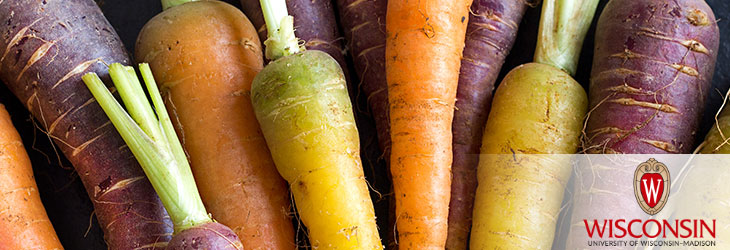Animals, Agriculture & Food

Nanostructures to Deliver Micronutrients and Suppress Disease in Agriculture
WARF: P180378US02
Inventors: Robert Hamers, Jaya Borgatta
The Wisconsin Alumni Research Foundation is seeking commercial partners interested in using copper-phosphate nanosheet technology for improved control of plant diseases. Establishing this technology in agricultural practices will allow for more environmentally friendly and sustainable usage of copper in agricultural settings.
Overview
Copper compounds have long been used as broad-spectrum pesticides in agriculture to repress plant diseases. However, the abundance of copper currently in use has led to concerns over environmental accumulation and the development of disease resistance in pathogens.
The Invention
UW-Madison researchers have created copper-phosphate nanosheets, which have demonstrated superior effectiveness in controlling plant disease and increasing yield compared to copper solutions and copper-oxide nanoparticles. The increase in efficacy is due to the nanosheet structure, which allows for a more rapid release of copper ions. This necessitates fewer applications with lower concentrations of copper to achieve results comparable to existing copper pesticides, thereby reducing the environmental burden associated with copper accumulation. Additionally, the size of these nanosheets can be modified to better suit specific plant systems, while the incorporation of additives such as stabilizers, surfactants, fertilizers and insecticides provides versatility for various targeted applications. Beyond copper, the composition of the nanosheets can also be modified to use a variety of metals and coordinating anions.
Applications
- Helps suppress plant disease and improve crop yields
- Can be used to deliver micronutrients to plants
Key Benefits
- Releases ions more efficiently
- Fewer applications are needed
- Reduces metal accumulation in the environment and the probability of pathogens developing resistance to copper
- Nanosheets can be modified to better suit specific plant systems.
- Compatible with additives for various applications
Stage of Development
The researchers’ results show that copper-phosphate nanosheets provide more effective and efficient control of disease in watermelon, soybean and tomato compared to copper-sulfate solutions and copper-oxide nanoparticles.
Additional Information
For More Information About the Inventors
Tech Fields
For current licensing status, please contact Jennifer Gottwald at [javascript protected email address] or 608-960-9854